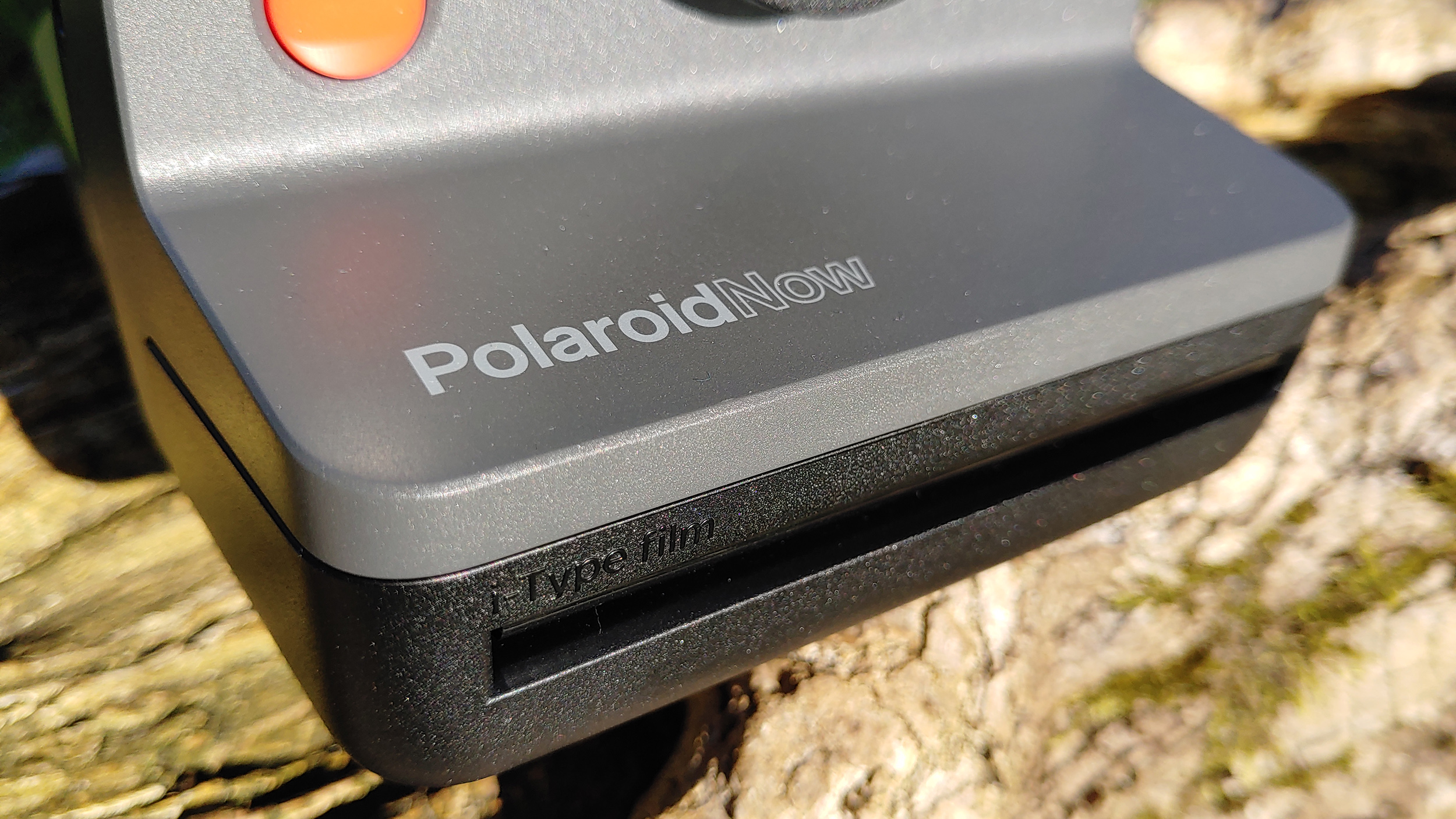TechRadar Verdict
A range of improvements make Polaroid's updated instant camera even easier to use, and take a lot of the guesswork out of shooting on instant film, even if exposures can still be inconsistent. The iconic shape makes the Now less portable than some rivals, though, and film remains expensive.
Pros
- +
Shoots classic, full-size polaroid film
- +
Autofocus gives consistent results
- +
Long battery life and USB recharging
Cons
- -
Bulky shape not easy to carry around
- -
Inconsistent exposures and inaccurate viewfinder
- -
Cost of film quickly adds up
Why you can trust TechRadar
It took the best part of a decade, but what began as the Impossible Project has managed to bring Polaroid back from the brink. Previously Polaroid Originals, the brand now owns the rights to the name – and the Polaroid Now is its first instant effort in this new guise.
An evolution of the fixed-focus Onestep 2, the Now is the first camera in the range with an autofocus lens. It's meant to take some of the guesswork out of shooting on instant, helping photographers avoid blurry images that waste expensive film.
Purpose-built for fun, spur of the moment snaps, it should appeal most to the instagram generation, anyone with a creative eye, and those looking to liven up parties or wedding receptions. It's easy to recommend as one of the best instant cameras currently available.
Each pack of Polaroid's bespoke I-Type film includes eight 4.2 x 3.5-inch shots, which have a 3.1-inch square image area. Both color and black and white film packs are available, for around $19 / £15 / AU$32 each, although you can buy multipacks at a slight discount. This makes them more expensive than rival Fuji's Instax Square format film, but Polaroid's prints are physically larger.



Design and features
- Unmistakable design with modern touches
- Straightforward operation
- Easy to load film packs
Classic Polaroid cameras had a distinctive look that the OneStep and OneStep 2 brought right up to date. The Polaroid Now is more of an evolution on those earlier models, with a very similar layout and familiar polycarbonate plastic construction, but fewer buttons.
Everything is more streamlined, with a more ergonomic viewfinder, relocated microUSB port for easier charging, and a digital shot counter that clearly shows how many prints you have left. It's more legible than the previous model's vague series of LED lights.

The lens is fixed in place, with no lens cap to protect it. The shutter and self timer buttons sit either side of it, while the power and flash buttons can be found at the rear.
Sign up for breaking news, reviews, opinion, top tech deals, and more.
One final button at the side opens the front-loading film tray, which is a lot sleeker than the manual sliding release switch seen on the older OneStep models. There's no tripod thread on the bottom of the camera, though, which feels like a backwards step from last year's OneStep Plus, and could make the self timer function a bit trickier to use.
It's impossible to overlook the Now's unusual shape. It's boxy, angular, and a challenge to use with one hand. There's a neck strap included in the box, but it's big enough to make sure you'll want to put it away in a bag when you aren't using it.



Performance
- Lens has an approximate 35-40mm focal length
- Handy self-timer mode
- Automatic flash
Framing your subject with the viewfinder can be tricky, as what you see isn't exactly what the camera lens captures. What appears to fit within the frame may end up cut off once your print develops. This is a fairly common instant camera trait, though, and for the most part placing your subject in the centre of the frame guarantees a clear shot.
Turn the camera on and the flash activates automatically. You'll only want to turn it off in brightly lit, outdoor scenes, as it's needed to even out exposures everywhere else. An LED makes it clear when the flash is enabled, so there's little chance of forgetting.
There are no shooting modes to get familiar with, and no focus modes to play with either; you just point, half-press the shutter button to autofocus, and fully press it to take a photo.
The photo gets spat out of the front of the camera almost instantly, and then takes between ten and fifteen minutes to fully develop. A Zero Ink instant camera might be faster, but it is effectively printing your images – Polaroid's I-Type instead uses a chemical process, which instant purists consider the 'proper' kind of instant film.











Image quality
- Autofocus largely effective
- Distinctive colors
- Exposure can be inconsistent
The addition of autofocus means a greater number of shots appear sharp across the frame, instead of just at the centre – a feature (or some might say issue) seen in the OneStep 2.
Autofocus works largely from a distance of around 0.5m, but try to snap anything closer and the end result is usually blurry. It's a trial-and-error experience, just like most instant cameras, but in the hands of anyone unfamiliar with the format, the Now should help reduce the number of wasted shots.
It does mean that selfie fans may be disappointed, though, as the autofocus can struggle to get a lock unless you have especially long arms. There's also no mirror on the front of the camera to aid composition, either.
Exposure can be a mixed bag, with the flash often not needed in situations you might think calls for it, leading to overblown highlights - a common experience across several packs of film. Conversely, indoor environments that seem well-lit can end up looking almost pitch black without the flash. It will hardly come as a surprise to anyone that remembers instant film the first time around, but photographers more used to their smartphone will need to adapt.
Every I-Type print produces muted colors and soft details, while shadows and darker elements of any particular scene tend to dominate. Sometimes unexpected colors appear in your shots, giving parts of blue skies a soft purple hue. It's exactly the look we'd expect from instant film, with light sometimes creeping into the edges of your shots for a truly analogue style.



Verdict
The Now feels like a forward step for Polaroid's instant camera range, with autofocus being genuinely useful in lots of shooting scenarios. Macro photography isn't this camera's forte, but given the spur of the moment nature of instant film, that's unlikely to put off those searching for a camera to take to parties and events.
It takes gloriously lo-fi images that have a unique visual style, and while it takes some experimenting to avoid over- and under-exposed shots, it is no more guilty of this than any of its rivals. It also seems sensibly priced, although the OneStep Plus isn't significantly more, and adds extras like Bluetooth connectivity for more creative shooting modes.
Portability and the cost of film let it down, while competing models from Fujifilm offer more advanced features that will appeal to photography fans, in smaller bodies. But the Polaroid Now wins for sheer ease of use and its prints are larger.
The competition

Fujifilm Instax Square SQ6
A more advanced feature set and compact shape makes Fuji's square format SQ6 a little more portable than the Polaroid Now, and Instax film is a little cheaper than I-Type too, but it lacks autofocus and uses non-standard batteries.

Lomo'instant Square
Much more flexible than the Polaroid now, the Lomo'instant Square includes lots of accessories to let you get creative with your photos, and can change between Instax Mini and Instax Square film types. It's significantly more expensive, though, and the boxy design is even less portable.

Fujifilm Instax Square SQ20
Combines analogue shooting on Instax Square film with digital smarts, letting you apply filters and edit pictures on an LCD screen before you hit print, though the more advanced features make it much pricier than the Polaroid Now.
- These are the best instant cameras you can buy right now
